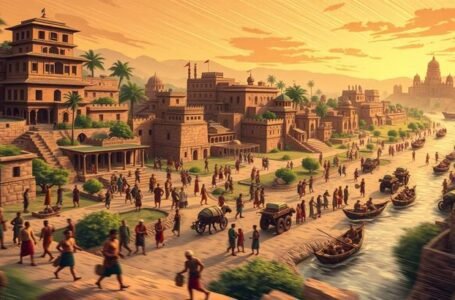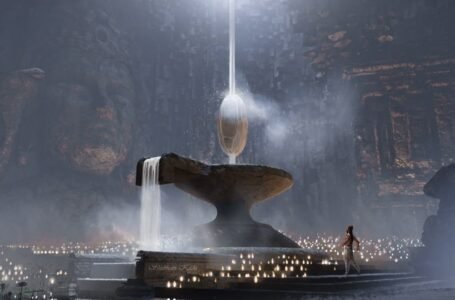Weaving the Nation’s Soul: The Enduring Role of Myth in Nation-Building

-Ananya Sinha
Nations are more than political land masses bounded by areas between borders, and also the reign of law; nations have deeper, shared memories, shared hopes, and deep cultural consciousness. To this extent, any perception of nations will inevitably start from myth, the very narrative of origin, conflict, and identity that they carry with them. End. Whether they originated in sacred texts, heroic verse, or popular tales passed down the centuries, myths provide countries with a sense of purpose, historical continuity, and moral guidance.
The essay talks about the active presence of myth in nation-building. It examines how it constructs national identity, preserves cultural unity, and justifies political order. From the mapping of examples of ancient civilizations and contemporary nation-states, we understand how myth is the soul and organizing principle for a nation. Finally, the essay concludes that while it is possible to question the historical truth of myths, their symbolic and unifying effect on nation-building is profound and lasting.
Understanding Myth in the National Context
Myth is not fantasy or fiction in classical terms. It is a story which relates to moral, spiritual, or cultural truths about a people. Myths explain the beginning of the people, the why of their existence, and values which they have to maintain. They may include supernatural creatures, epic heroes, holy landscapes, or historical moments, providing an explanation in terms of which societies interpret the past and anticipate the future.
When combined with nation-building, myth is a collective narrative that unites a people in history and destiny. In emerging or changing states, myths fill the gap of history, transcend linguistic or ethnic divisions, and give the nation an extramundane character. The creation and recreation of these myths provide a collective consciousness necessary for political unity.
Myth as a Narrative of Origin
Among the most significant roles of myth in nation-building is the establishment of a sense of beginnings—a sacred myth of nation origin. Origin myths tend to incorporate memory history and imaginary retelling, producing a mythologized version of the past.
1. Rome and the Myth of Romulus and Remus
The Roman Empire, one of the most magnificent civilizations in history, had originated from the myth of Romulus and Remus, twin children brought up by a she-wolf and fated to found the city of Rome. The myth gave Rome its august lineage but also demonstrated pugnacity, divine favor, and warcraft—virtues embraced by the Romans.
2. India and the Epic Tradition
In India, national identity has long been based on epic mythology like the Ramayana and Mahabharata. Religious and moral in nature, they were also mythic templates for political ideals: the just king (Rama), the righteous society, and the just war. They remain models for concepts of duty, justice, and nationhood.
3. The United States and the Founding Fathers
Today even secular republics turn to origin myths. The American Revolution, blessed with tales of the Founding Fathers, the Declaration of Independence, and the Constitution, is customarily described as much a record as of heroic struggle for freedom. George Washington and Abraham Lincoln have been mythologized as embodiments of unity, moral rectitude, and democratic virtue.
Myth as a Tool for Unity and Identity
Homogeneous nations do not exist. Ethnic, linguistic, and regional differentials may exist which can be a cause of strain in national integration. Under such circumstances, myths function as an adhesive of culture, providing common symbols and narratives transcending local identity.
1. The Concept of Bharat Mata
In India, the concept of Bharat Mata (Mother India) emerged in the late 19th and early 20th centuries as a symbolic embodiment of the nation. Depicted as a nurturing mother, she represented not just the geographical territory but the spiritual and cultural unity of a diverse population. The image, while rooted in cultural tradition, functioned as a powerful mythic figure around whom nationalist movements could rally.
2. The French Revolution and Marianne
The allegorical female figure Marianne in revolutionary France represented liberty and reason. She represented the spirit of the Republic and was immortalized in art, sculpture, and public ceremonies, thereby unifying the French under the principles of the Revolution.
3. Japan’s Imperial Myth
Japan’s national identity for centuries rested on the myth that the Emperor was directly descended from the sun goddess Amaterasu, as legally defined in the Kojiki and Nihon Shoki. In spite of the altered role of the Emperor, the myth has been used to justify authority and unify the Japanese people as divine line.
Myth and Moral Instruction in Nation-Building
Myths are not narratives; they possess moral structures that assist in defining civic action and social responsibility. When countries construct institutions and law, myth offers a symbolic lexicon by which citizens perceive right and wrong, justice and injustice, loyalty and treason.
1. The Mahatma as a Mythic Figure
Today’s India has been able to bestow quasi-mythic status upon Mahatma Gandhi. Although his life is very well recorded in the pages of history, the mythic narrative of his asceticism, non-violence, and moral complexity has transubstantiated him from politics into ethical citizenship imagery. His life provides a moral lesson to citizens as well as policymakers.
2. Myth and the Civil Rights Movement
In America as well, Martin Luther King Jr. has been transformed into a mythic figure whose legacy enters the realm of historical biography. His sermons, particularly “I Have a Dream,” abound in mythic rhetoric and biblical rhythms that summarize the struggle for civil rights as a contemporary Exodus—a march from slavery to freedom.
Institutionalization of Myth through Ritual and Memory
To survive, myth needs to be ritualized and institutionalized—shaped into public reality through the means of ceremonies, national holidays, monuments, literature, and education. That guarantees the ongoing virility of myth as a force in the nation’s mind.
1. National Days and Commemorative Rituals
India’s Republic Day, the Independence Day of the United States, and France’s Bastille Day are not only civic holidays but ritualized reaffirmations of the national founding myth. In parades, speeches, and ceremonies, the nation re-enacts its mythic birth and reaffirms devotion to shared ideals.
2. Monuments and Memorials
Statues, monuments, and sites are sacred geography—spaces upon which national myth is etched in stone. The Lincoln Memorial, India Gate, or Arc de Triomphe is not only an architectural achievement but a material expression of national myth and memory.
The Creation and Reinterpretation of Myth
Myths evolve over time. Changing societies bring changing history. Today’s challenges—migration, globalization, the environment—call for reinterpreting national myth in order to remake it and incorporate it.
1. Enlarging the Circle of Heroes
Contemporary nation-states increasingly acknowledge the accomplishments of heretofore excluded groups—women, minorities, and indigenous peoples—and inscribe their narratives into the nation’s mythos. Expansion of narrative renders the myth representative and integrative.
2. From Ethnic to Civic Myths
The majority of countries have shifted from ethnic myths (race, language, or blood) to civic myths (the belief in shared values like democracy, justice, and liberty). This fosters inclusiveness in multicultural societies where identity is not so much about blood but believing in universal ideals.
Challenges and Responsibilities
Whereas myths bring together, they also bring burden and danger. Selective application of myth will exclude some and falsify others. Nation-builders must therefore approach myth discriminately, inclusively, and ethically.
1. Refrain from Mythic Absolutism
No myth should ever be regarded as absolute or unquestionable. An open nation allows for argument, re-interpretation, and pluralism so that national myths are an inspiration and not a repression.
2. Myth and Truth
Though myths are not constrained by factual truth, they must convey emotional and moral truth. A myth losing touch with reality or moral intent threatens to descend into propaganda.
Conclusion
Myths are not of a distant past—they are living myths that continue to mold the soul of nations. Myths provide a common past, a moral code, and a common vision for the future. Nation-building, meanwhile, myth is a vehicle that brings together memory and identity, history and aspiration, ritual and reality.
In an era of accelerated change and accelerating complication, even nations still recur to their myth of origins for guidance and cohesion. Under the management of wise hands and far-reaching reinterpretation, myth can encourage successive generations of citizens to be active participants in not only the stability of their country, but in its development as a fair, compassionate, and long-lived society. And so, the potential of myth in nation-building is neither merely symbolic—it is deeply essential.


